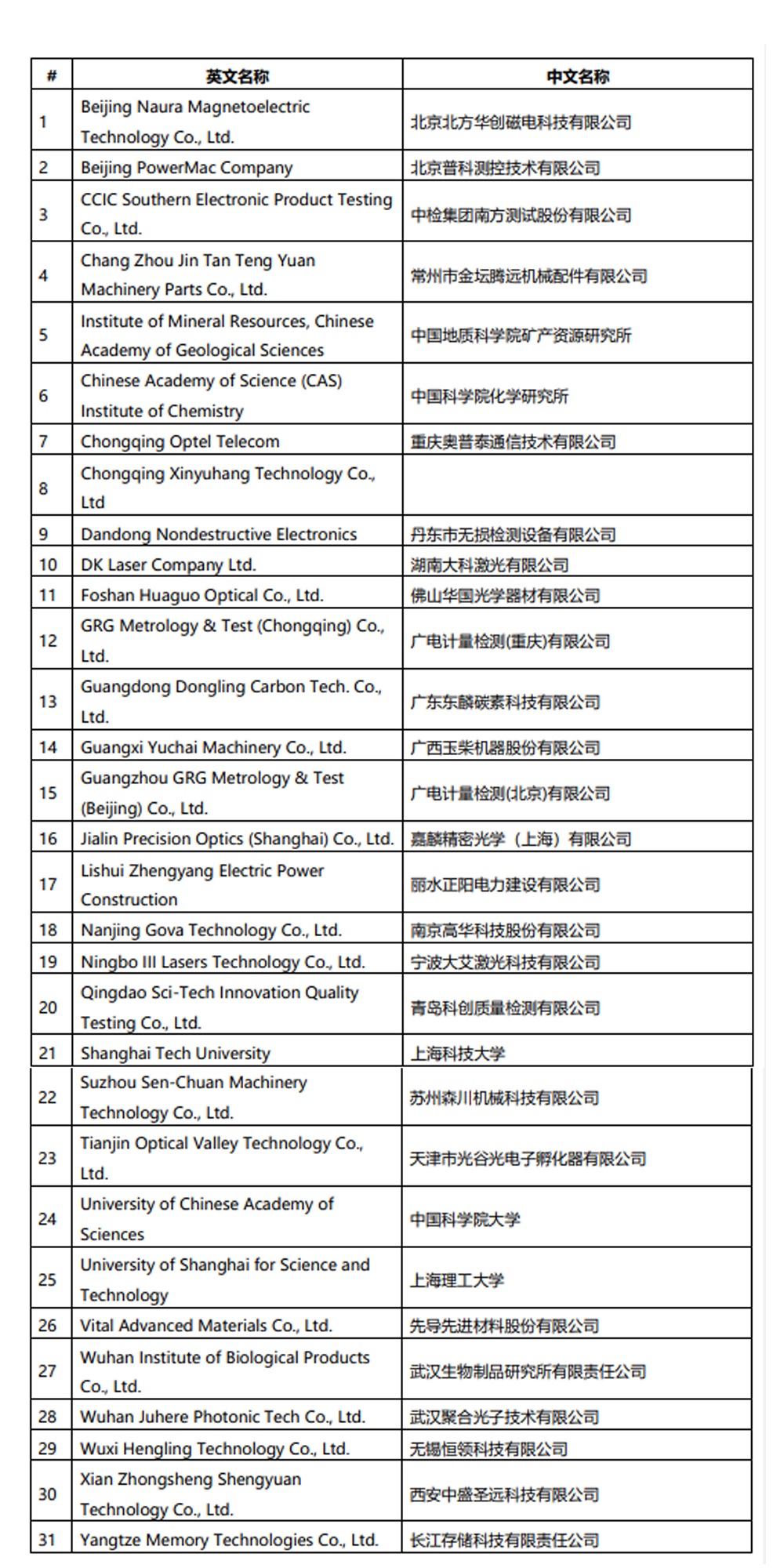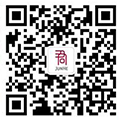美国商务部“未经核实清单”的“脱单”攻略
2022.10.22 闫振峰 马瑞欣
一、相关背景
美国东部时间2022年10月7日,美国商务部工业安全局(Bureau of Industry and Security,下称BIS)发布最终规则1,修订美国《出口管理条例》(Export Administration Regulation,下称EAR),称出于美国政府控制之外的原因,BIS无法针对EAR管控物项的外国交易方进行令其满意的最终用途核查,从而无法判断该类实体是否真实可信2,将31家中国企业新增列入“未经核实清单”(即Unverified List,简称UVL)。前述规则于2022年10月7日发布当日生效,并于2022年10月13日在美国联邦公报上正式发布3,公报编号为2022-21714。

根据BIS于2022年10月7日发布的官方声明4,“新宣布的出口管制措施旨在进一步维护美国国家安全及外交利益,修订后的EAR新规将限制中国获取先进计算机芯片、研发和维护超级计算机以及制造先进半导体的能力,而中国将这一类物项用于生产包括大规模杀伤性武器在内的先进军事系统、进一步提高其军事决策、规划、后勤以及自动军事系统的速度和精度,并实施侵犯人权的行为。新规最后明确,如果外国政府妨碍BIS就是否合规进行判断,将会导致相关企业被列入‘实体清单’,从而影响相关企业获取美国技术”5。
中国驻美国大使馆将美国商务部此举称为“科技霸权”,表示美国正在用“科技实力”压制新兴市场的发展中国家6。商务部研究院国际市场研究所副所长白明接受《环球时报》采访表示7,此次“未经核实清单”的更新,意味着美国并非在某一类高科技产品的生产环节打压中国,而是试图在包括支撑高科技产业发展的研发机构等系列环节上对中国“卡脖子”,从而实现对华的“系统性打压”。
二、“未经核实清单”内涵、列入情形、法律后果
(一)内涵——BIS无法核查是否真实可信
根据EAR第744.15条(c)款第(1)项规定8,对于出口、再出口以及国内转让受EAR管控物项涉及的外国主体,如果BIS或代表其行使职责的联邦官员在其进行许可前审查9或发货后审查10的过程中,出于美国政府控制之外的原因,无法完成最终用途核查,以判断该外国主体是否真实可信(例如涉及EAR管控物项的最终用途和最终用户的合法性和可靠性)11,则该外国主体可能会被列入“未经核实清单”。“未经核实清单”为EAR第744部附件612。
(二)列入情形
根据EAR第744.15条(c)款第(1)项规定13,具体列入“未经核实清单”的情形包括但不限于:
序号 | 情形 |
1 | 进行最终用途核查时,被核查对象无法证明如何处置EAR管控物项14; |
2 | 无法核实最终用途核查对象是否存在或其真实性无法核实(如,无法定位或联系到被核查对象)15; |
3 | 东道国政府当局不配合,导致最终用途核查无法进行16。 |
如果BIS无法确信最终用途核查的外国主体真实可信,BIS将对其未来是否适合从事EAR管控物项相关出口活动产生怀疑,并且认为存在EAR管控物项被用于禁止最终用途和/或最终用户的风险17。这种情况下,BIS尚无充分的信息将相关主体根据EAR第744.11条列入“实体清单”,因而可以将其列入“未经核实清单”18。
(三)法律后果
1. 2002年6月14日首次发布“未经核实清单”时的法律后果
2002年6月14日,BIS以发布通知的方式,首次发布“未经核实清单”19,将11家外国主体列入“未经核实清单”,其中包括9家中国企业。BIS要求,美国出口商与“未经核实清单”所列主体进行交易时,应当视为EAR第732部附件3“了解你的客户”指引中的“红色警示”,出口商应当有义务问询、验证或以其他方式确保拟议交易不涉及EAR第744部禁止的扩散行为、而且不违反EAR的其他规定20。如果出口商在调查后仍存疑虑,则应避免此类交易,或以申请许可证或咨询意见的形式向BIS提交所有相关信息21。
2. 2013年12月19日修订“未经核实清单”规则后的法律后果
2013年12月19日,BIS根据前期实施“未经核实清单”的经验总结,在EAR中系统性的增加了“未经核实清单”的相关规则22。本次修订之后,美国出口商与“未经核实清单”所列主体进行交易,应当履行以下义务:
# | 后 果 |
1 | 无法再依据EAR适用出口许可例外,出口商需要另行申请许可证23; |
2 | 出口、再出口或国内转移受EAR管控但是不要求许可证的物项(如EAR99类物项),也须在出口前获得一份未经核实清单实体的声明24; |
3 | 向未经核实清单实体出口有形商品,不论商品最终目的地或金额如何,出口商都必须额外在自动出口系统中事先进行电子出口信息的申报25。 |
3. 2022年10月7日澄清“未经核实清单”执法政策后的法律后果
2022年10月7日,美国商务部负责出口管制执法的助理部长Matthew Axelrod签发了一份《解决外国政府阻止最终用途核查的备忘录》26;其中明确,对于向“未经核实清单”所列主体进行出口的许可申请,都必须先完成许可前审查27。
另外,针对由于东道国原因导致BIS无法完成最终用途核查的情形,美国商务部出口执法部门设计了如下执法机制以督促外国政府履行配合义务28:
# | 情形 | 法律后果 |
1 | BIS提出进行最终用途核查后60日内未能完成最终用途核查。 | BIS启动跨部门监管程序将相关外国主体列入“未经核实清单”。 |
2 | 将相关外国主体列入“未经核实清单”后60日内未能完成最终用途核查。 | BIS启动跨部门监管程序将相关外国主体从“未经核实清单”移出并列入“实体清单”。 |
BIS同步修订EAR第744.11条关于“实体清单”的规则,以反映前述执法政策变化29,EAR第744.11条(b)款第4项规定了因为阻止最终用途核查而列入“实体清单”的情形,2022年10月13日的最终规则在该项下增加一种具体情形,即“东道国政府持续缺乏合作,因此无法根据第744.15条的规定安排并促使完成对未经核实名单上所列实体的最终用途核查,引发充分关注,从而使得最终用户审查委员会认为,对涉及相关主体的出口、再出口或国内转让进行事先审查、施加许可条件或拒绝许可,可以增强BIS防止违反EAR的能力”30。
需要特别注意的是,对于因为东道国不配合原因已经列入“未经核实清单”的外国主体,如果自2022年10月7日起60天内(即2022年12月6日前)不能完成最终用途核查的,BIS将启动跨部门监管程序,将这些外国主体从“未经核实清单”中移出并列入“实体清单”。
三、如何从“未经核实清单”移出
(一)移出依据
根据EAR第744.15条(c)款第(2)项规定31,被列入“未经核实清单”的主体申请将其从“未经核实清单”移出必须根据EAR第744.15条(d)款提交申请。
(二)移出条件
根据EAR第744.15条(c)款第(2)项规定32,当BIS通过许可前审查和发货后审查可以确认被列入“未经核实清单”的主体真实可信时,BIS会将相关主体从“未经核实清单”中移出;如因东道国原因导致无法完成许可前审查和发货后审查,可以采用BIS认为足够充分的替代核查方法。
根据BIS于2013年12月19日修订“未经核实清单”规则时的说明,替代核查方法之一,是由出口商或者出口许可申请人根据相关外国主体的请求,前往后者场所进行最终用途核查,并向美国政府提交充分信息,以证明相关外国主体真实可信33。申请替代核查方法的程序与申请从“未经核实清单”移出的程序相同34。
(三)申请文件和材料
根据EAR第744.15条(d)款规定35,移出申请应当为书面形式,包括申请理由以及证明相关主体真实可信的信息。
(四)移出申请的提交
根据EAR第744.15条(d)款规定36,移出申请应当发送给美国商务部工业安全局出口执法分析办公室主任,
英文联系信息:
Director, Office of Enforcement Analysis, Bureau of Industry and Security, U.S. Department of Commerce,
14th Street and Pennsylvania Avenue NW., Room 4065, Washington, DC 20230,
via fax to (202) 482-0971
email to UVLRequest@bis.doc.gov
联系信息中文翻译:
美国华盛顿特区宾夕法尼亚西北大道和第14街交叉口,
商务部,工业安全局,出口执法分析办公室,4065房间,
收件人:办公室主任
发送传真至:(202) 482-0971
发送邮件至:UVLRequest@bis.doc.gov
(五)申请移出的决定
根据EAR第744.15条(d)款规定37,美国商务部负责出口执法事务的副助理部长将审查从“未经核实清单”移出的申请,并将决定以书面方式告知申请人,该决定为最终决定。
四、申请移出的可行性分析
(一)自我评估
相比较从“实体清单”、“最终军事用户清单”申请移出,从“未经核实清单”移出非常容易。将外国主体列入“未经核实清单”的原因是BIS因超出其控制的原因无法完成最终用途核查;反之,只要BIS能够完成最终用途核查,即可将相关外国主体从“未经核实清单”移出。
因此,如果被列入“未经核实清单”的相关主体在交易时提供了真实的身份信息,按照合同约定的用途使用相关受控物项,应当及时主动向BIS提交移出申请。
(二)BIS的审查态度
申请从“未经核实清单”移出被EAR规定为一项相关主体的权利,2022年10月13日BIS发布的最终规则中,有9家中国企业从“未经核实清单”中移出38。所以从实践角度,BIS也是按照EAR的规定,愿意在确认相关主体真实可信之后将其从“未经核实清单”中移出。
五、结语
根据2022年10月13日修订后的EAR,BIS加强了对因为东道国原因不能完成最终用途核查的执法力度,即第一步先列入“未经核实清单”、第二步再列入“实体清单”,一旦列入“实体清单”,未经BIS许可,将不得向相关主体出口、再出口或在国内转让就该主体在清单“许可要求”列所对应的物项;而且,对于因为东道国不配合原因已经列入“未经核实清单”的外国主体,如果不能在2022年12月6日前完成最终用途核查,将被从“未经核实清单”中移出并列入“实体清单”;因此,我们强烈建议被列入“未经核实清单”的企业,及时配合BIS的最终用途核查,以避免被施加更严重的执法措施。
[1] https://www.federalregister.gov/public-inspection/2022-21714/revisions-to-the-unverified-list-clarifications-to-activities-and-criteria-that-may-lead-to
[2] 同上。英文原文:“the 31 persons are added to the UVL on the basis that BIS was unable to verify their bona fides because an end-use check could not be completed satisfactory for reasons outside the U.S. Government’s control.”
[3] 同上。
[4] https://www.bis.doc.gov/index.php/documents/about-bis/newsroom/press-releases/3158-2022-10-07-bis-press-release-advanced-computing-and-semiconductor-manufacturing-controls-final/file
[5] 同上。英文原文:“The export controls announced in the two rules today restrict the PRC’s ability to obtain advanced computing chips, develop and maintain supercomputers, and manufacture advanced semiconductors. These items and capabilities are used by the PRC to produce advanced military systems including weapons of mass destruction; improve the speed and accuracy of its military decision making, planning, and logistics, as well as of its autonomous military systems; and commit human rights abuses. Finally, these rules make clear that foreign government actions that prevent BIS from making compliance determinations will impact a company’s access to U.S. technology through addition to the Entity List.”
[6] 环球网,《美政府又出芯片限制恶招打压中企!专家:怕中国高科技产业做强》,https://world.huanqiu.com/article/49xsjzcFW8y
[7] 同上。
[8] https://www.ecfr.gov/current/title-15/subtitle-B/chapter-VII/subchapter-C/part-744/section-744.15#p-744.15(c)(1)
[9] Pre-license check (PCL)
[10] Post-shipment verification (PSV)
[11] 同脚注8。英文原文:“Foreign persons who are parties to an export, reexport, and transfer (in-country) subject to the EAR may be added to the Unverified List if BIS or federal officials acting on BIS's behalf cannot verify the bona fides (i.e., legitimacy and reliability relating to the end use and end user of items subject to the EAR) of such persons because an end-use check, such as a pre-license check (PLC) or a post-shipment verification (PSV), cannot be completed satisfactorily for reasons outside of the U.S. Government's control. ”
[12] https://www.ecfr.gov/current/title-15/subtitle-B/chapter-VII/subchapter-C/part-744/appendix-Supplement%20No.%206%20to%20Part%20744
[13] 15 CFR 744.15(c)(1),https://www.ecfr.gov/current/title-15/subtitle-B/chapter-VII/subchapter-C/part-744/section-744.15#p-744.15(c)
[14] https://www.ecfr.gov/current/title-15/subtitle-B/chapter-VII/subchapter-C/part-744/section-744.15#p-744.15(c)(1)
英文原文:“During the conduct of an end-use check, the subject of the check is unable to demonstrate the disposition of items subject to the EAR.”
[15] 同上。英文原文:“The existence or authenticity of the subject of an end-use check cannot be verified (e.g., the subject of the check cannot be located or contacted).”
[16] 同上。英文原文:“Lack of cooperation by the host government authority prevents an end-use check from being conducted.”
[17] https://www.federalregister.gov/documents/2022/10/13/2022-21714/revisions-to-the-unverified-list-clarifications-to-activities-and-criteria-that-may-lead-to
英文原文:“BIS’s inability to confirm the bona fides of foreign persons subject to end-use checks for the reasons described above raises concerns about the suitability of such persons as participants in future exports, reexports, or transfers (in-country) of items subject to the EAR; this also indicates a risk that such items may be diverted to prohibited end uses and/or end users.”
[18] 同上。英文原文:“Under such circumstances, there may not be sufficient information to add the foreign person at issue to the Entity List under § 744.11 of the EAR. Therefore, BIS may add the foreign person to the UVL.”
[19] https://www.federalregister.gov/documents/2002/06/14/02-15095/list-of-unverified-persons-in-foreign-countries-guidance-to-exporters-as-to-red-flags
[20] 同上。英文原文:“Accordingly, this notice also advises exporters that the participation of a person on the Unverified List in any proposed transaction will be considered by BIS to raise a “red flag” for purposes of the “Know Your Customer” guidance set forth in Supplement No. 3 to 15 CFR part 732. Under that guidance, whenever there is a “red flag,” exporters have an affirmative duty to inquire, verify, or otherwise substantiate the proposed transaction to satisfy themselves that the transaction does not involve a proliferation activity prohibited by part 744, and does not violate other provisions of the EAR.”
[21] 同上。英文原文:“If an exporter continues to have reasons for concern after the inquiry, the exporter should refrain from such transaction or submit all relevant information to BIS in the form of an application for a license or a request for an advisory opinion.”
[22] https://www.federalregister.gov/documents/2013/12/19/2013-30117/revisions-to-the-export-administration-regulations-ear-unverified-list-uvl
[23] 15 CFR 740.2(a)(17),https://www.ecfr.gov/current/title-15/subtitle-B/chapter-VII/subchapter-C/part-740/section-740.2#p-740.2(a)(17)
英文原文:“(a) You may not use any License Exception if any one or more of the following apply:
……(17) A party to the transaction, as described in § 748.5 of the EAR, is listed on the Unverified List in supplement no. 6 to part 744, see § 744.15 of the EAR.”
[24] 15 CFR 744.15(b),https://www.ecfr.gov/current/title-15/subtitle-B/chapter-VII/subchapter-C/part-744/section-744.15#p-744.15(b)
英文原文:“Before proceeding with any export, reexport, or transfer (in-country) subject to the EAR that is not subject to a license requirement, involving a person listed on the Unverified List as a party described in § 748.5 of the EAR, an exporter, reexporter, or transferor (in-country) must obtain a UVL statement from such person…”
[25] 15 CFR 758.1(b)(8),https://www.ecfr.gov/current/title-15/subtitle-B/chapter-VII/subchapter-C/part-758/section-758.1#p-758.1(b)(8)
英文原文:“(b)When is an EEI filing required to be filed in the AES. Except when the export of items subject to the EAR is to take place electronically or in an otherwise intangible form, you must file EEI in the AES with the United States Government for items subject to the EAR, including exports by U.S. mail, in the following situations:
(8) For all exports of tangible items subject to the EAR where parties to the transaction, as described in § 748.5(d) through (f) of the EAR, are listed on the Unverified List (supplement no. 6 to part 744 of the EAR), regardless of value or destination;”
[26] Addressing Foreign Government Prevention of End-Use Checks,
https://bis.doc.gov/index.php/documents/policy-guidance/3156-axelrod-prevention-of-end-use-checks-policy-memo-10-7-22/file
[27] 同上。英文原文:“As a matter of policy, until a successful end-use check is completed, BIS imposes pre-license checks on all subsequent license applications received for exports to a listed party.”
[28] 同上。
[29] https://www.federalregister.gov/d/2022-21714/p-45
[30] 15 CFR 744.11(b)(4)(ii),https://www.ecfr.gov/current/title-15/subtitle-B/chapter-VII/subchapter-C/part-744/section-744.11#p-744.11(b)(4)(ii)
英文原文:“A sustained lack of cooperation by the host government to schedule and facilitate the completion of an end-use check of entities identified on the Unverified List pursuant to § 744.15, resulting in sufficient concern such that the End-User Review Committee believes that prior review of exports, reexports, or transfers (in-country) involving the entity and the possible imposition of license conditions or license denial enhance BIS's ability to prevent violations of the EAR.”
[31] 15 CFR 744.15(c)(2),https://www.ecfr.gov/current/title-15/subtitle-B/chapter-VII/subchapter-C/part-744/section-744.15#p-744.15(c)(2)
[32] 同上。
[33] 同脚注22。
[34] 同上。
[35] 15 CFR 744.15(d),https://www.ecfr.gov/current/title-15/subtitle-B/chapter-VII/subchapter-C/part-744/section-744.15#p-744.15(d)
[36] 同上。
[37] 同上。英文原文:“The Deputy Assistant Secretary for Export Enforcement will review such requests and will convey the decision on the request to the requester in writing based on an assessment of the listed person's bona fides as a party to exports, reexports, and transfers (in-country) subject to the EAR. That decision will be the final agency action on the request.”
[38] https://www.federalregister.gov/d/2022-21714/p-43












